The Art of Founders Hall
Native art installations and historic sculpture enhance the PNW aesthetic of Foster’s newest building
There is an abundance of artistry in the design of Founders Hall at the UW Foster School of Business, where structural wood and soaring glass connect built and natural environments in unexpected and eye-catching ways—bringing the outside in and the inside out.
But there is plenty of art, too. The newest building on the UW campus also functions as a de facto gallery, exhibiting several stirring works by Northwest masters.
Commissioned installations by prominent local Native artists—“Salish Journey Through Water” by Shaun Peterson (also known as Qwalsius) of the Puyallup Nation and “Life of the Salmon” by Tulalip-Tlingit artist James Madison—tell vital visual stories and honor the heritage of the land on which Founders Hall stands.
The “Fountain of Reflection,” rescued and lovingly restored, is a classic of George Tsutakawa, the iconic Seattle-based Japanese American sculptor—and Husky—renowned for his exquisite expressions of flowing forms and cultural intersections.
In wholly different styles, these artistic installations evoke the odyssey of life and invite contemplation. Dean Frank Hodge describes them as “striking metaphors for the profound transformation that occurs on a student’s educational journey within the walls of Founders Hall and throughout the Foster School.”

“Life of the Salmon,” a series of bronze casts created and embedded in concrete by James Madison, traces the epic “upstream” run of the sacred fish as they grow and mature from the ground floor exterior to the fifth-floor Founders Gallery.
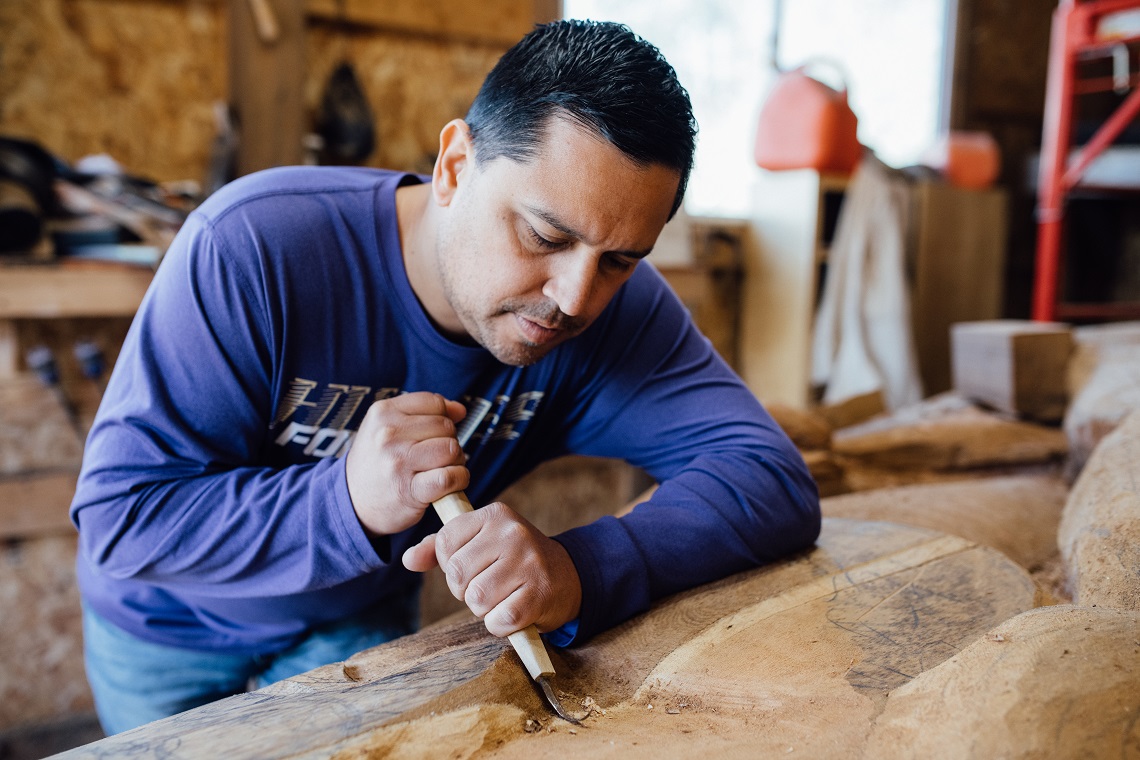
Madison, a member of the Tulalip Tribes, was raised in a family steeped in traditional Salish and Tlingit Northwest-Coast Native art. He began carving when he was eight years old, under the tutelage of his grandfather, Frank Madison, and father, Richard Madison. Richard also taught his son sculpture and abstract painting, and introduced him to the European masters and their innovative styles.
James Madison earned his BA in fine arts from the UW in 2000, and another from the Pratt School of Fine Arts in 2004, where he studied the art history of the Native American Northwest Coast, two-dimensional design and carving, metal sculpture and glass blowing, fusing and casting.
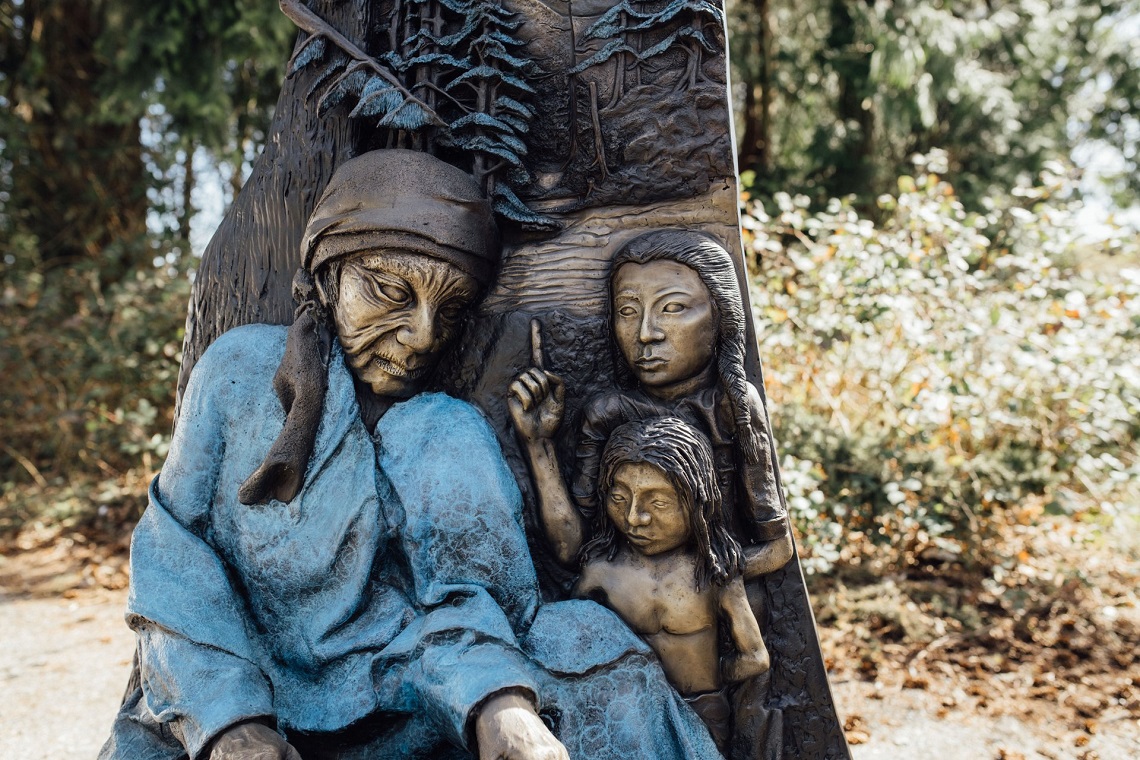
A master wood carver, Madison also works in a variety of contemporary media, including glass, bronze and metal fabrication. His pieces can be found in public spaces on Tulalip tribal lands all over western Washington and in collections from Seattle to New York to Italy. His bronze Husky graces the UW’s Tyee Club. His 23-foot story pole towers in the lobby of the Tulalip Resort and Casino.
For his Founders Hall installation, Madison created wax “positives” in the lost wax method to create the polished bronze salmon that advance in age and maturity as they ascend levels of the building.
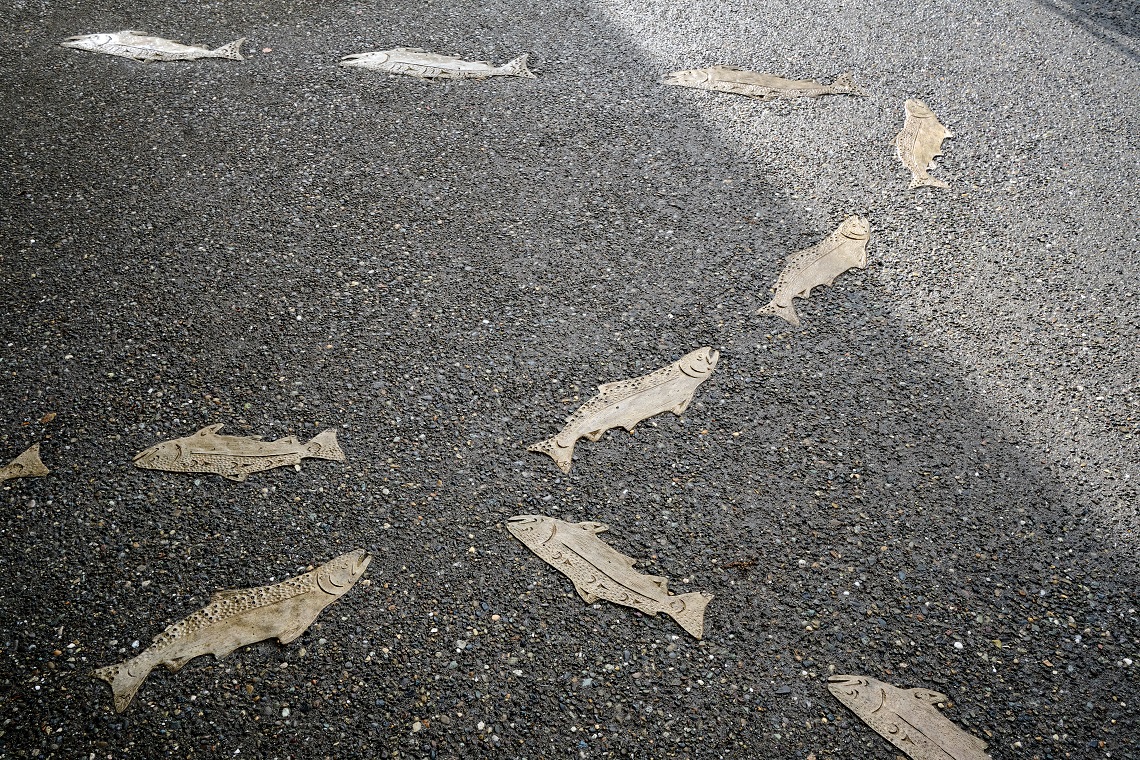
Madison notes that he is “always thinking of new ways to add a modern twist to a traditional piece. This allows for me to help to keep my culture alive. As we move into the future, so do the teachings of my ancestors. Cast bronze figures of king, sockeye, silver, humpy and chum salmon are arranged to represent both the importance of their perseverance through life cycle and the celebration of their jubilant return. Salmon’s journey and homecoming remind us that we are in a place where knowledge and values are transferred from generation to generation.”
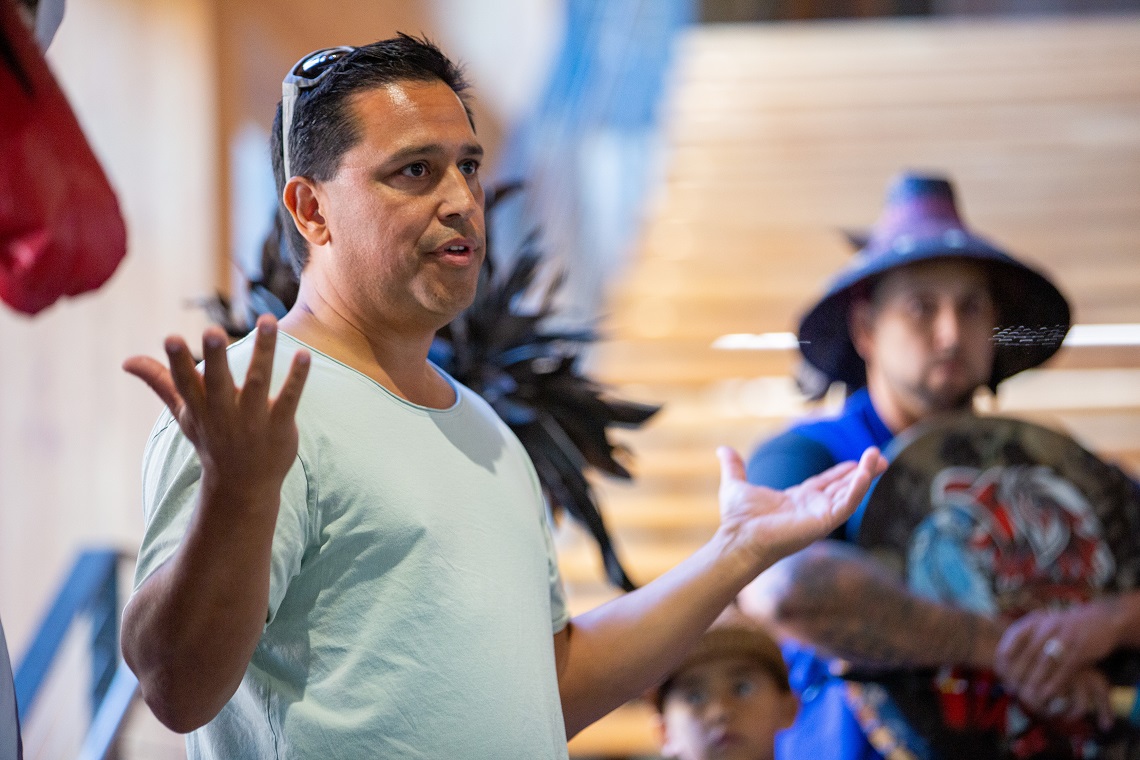
He adds that his art has a mission: to save the native Salmon and Orca that are struggling to survive in the Salish Sea. “When I take on these projects, it is to extend the stories that have been passed on from my dad and grandad and thousands of generations before them,” Madison says. “A long time ago we believed that animals and human beings spoke the same language. It’s very important to me that we protect these species, because they are our relations.”
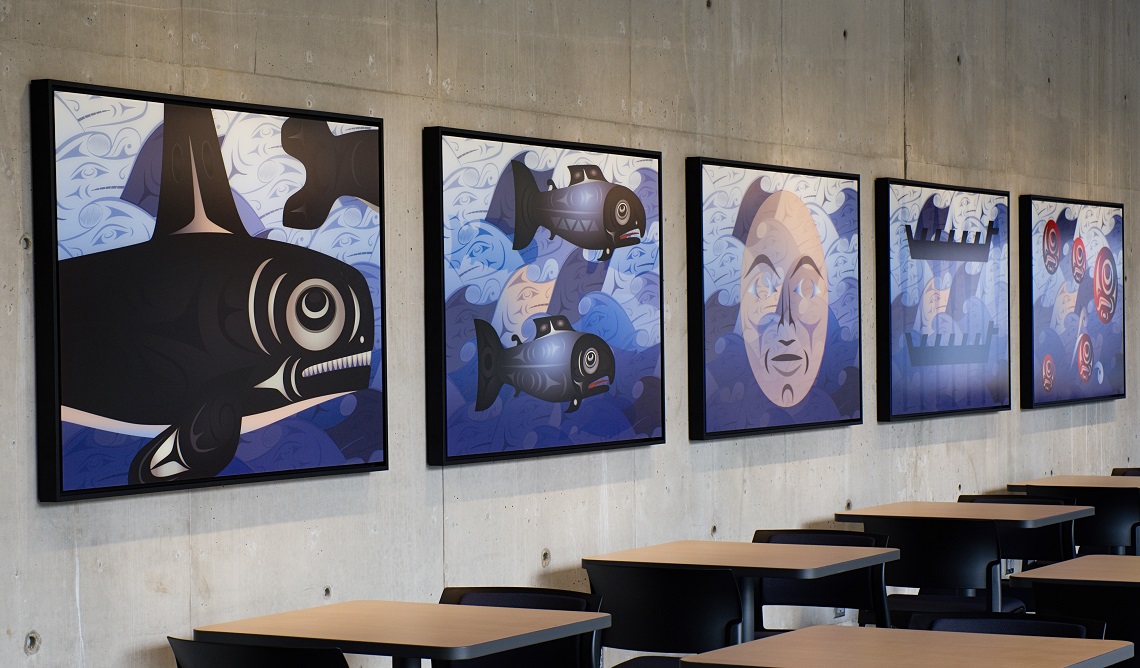
A vibrant suite of paintings in Founders Commons, “Salish Journey Through Water” is the work of Qwalsius-Shaun Peterson. Each panel depicts an important symbol of the Coast Salish peoples’ identity—Killer Whale, Salmon, Salmon roe, Moon, Canoe—all connected by the motif of water, which makes the journey possible.
Peterson, of Puyallup and Tulalip tribal ancestry, has become an important figure in the revival of Northwest Native art and cultural practices.
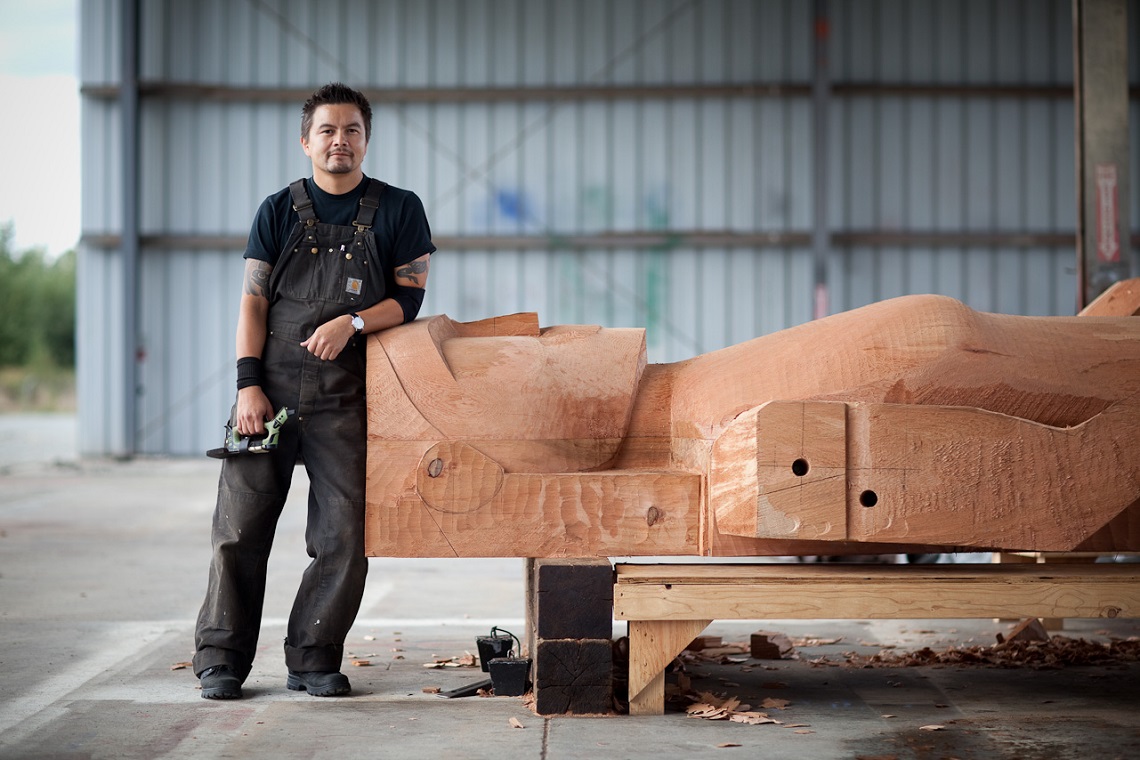
Known for his work as a carver, painter, printmaker and sculptor, Peterson began studying as a boy under the artist Robert Thornhill, who happened to live down the street from the Peterson family in Puyallup. He later apprenticed with several expert artists to learn the traditional styles and techniques of Southern Coast Salish art.
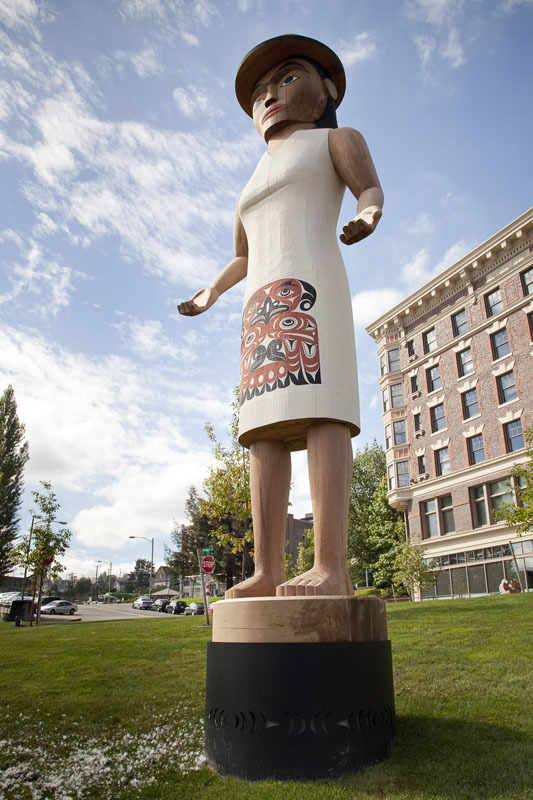
Since 1996, when he created a traditional story pole for the Chief Leschi Schools in Puyallup, Peterson has made his mark on the region through major public art commissions and sought-after studio work. In 2010, he installed a 24-foot-tall “Welcome Figure” in Tacoma’s Tollefson Plaza, the site of an ancestral village. Other works are displayed throughout the PNW, including in the Seattle Art Museum, Tacoma Art Museum and the Emerald Queen Casino.
In 2015, he was awarded a $250,000 public art commission by the City of Seattle for the Central Waterfront project.
Peterson’s Founders Hall exhibit draws inspiration from his connection to place and the cultural values of his Coast Salish heritage. It also follows a consistent theme of his work to marry the traditional and modern. Those emblems of life in the Puget Sound People are set against a roiling sea whose stylized waves—if you look closely—allude to UW Husky iconography, too.
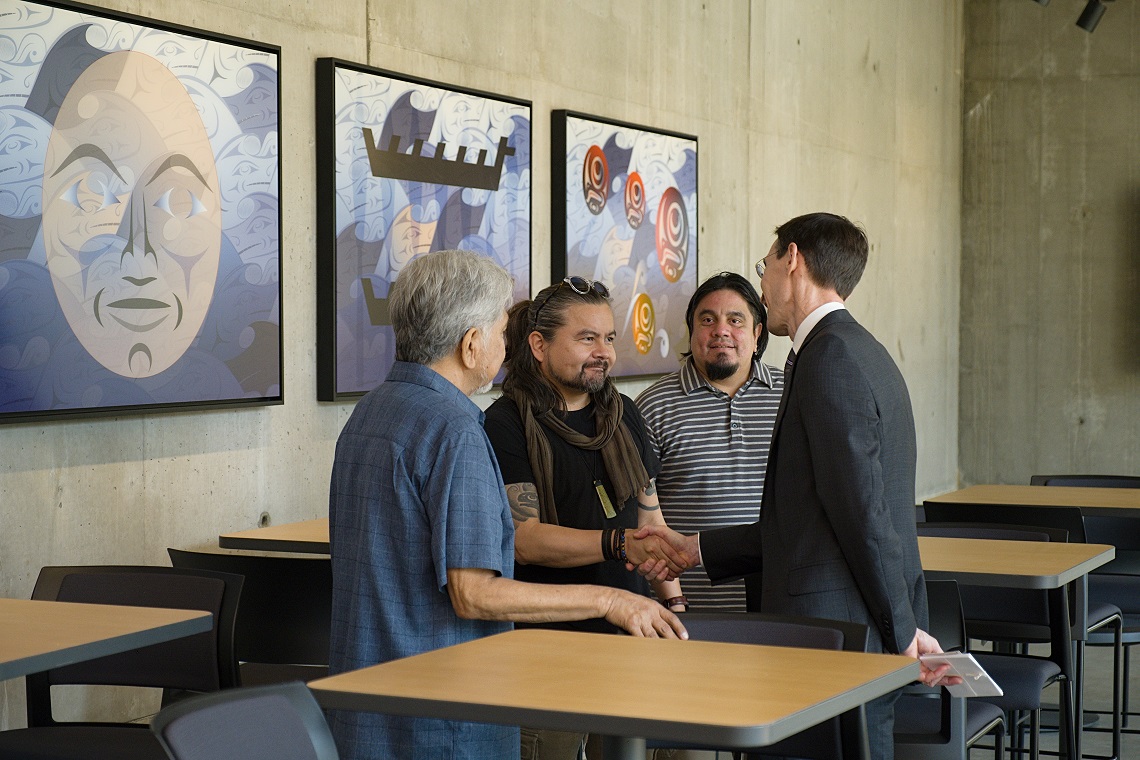
“Seattle is named after our Coast Salish Chief, and in honor of that I hope that my work will demonstrate that Native art is not static,” Peterson has said. “Our people are part of this land and its history, but most importantly we are part of the present. The art I create will aim to communicate that and, in the process, create space for dialogue.”
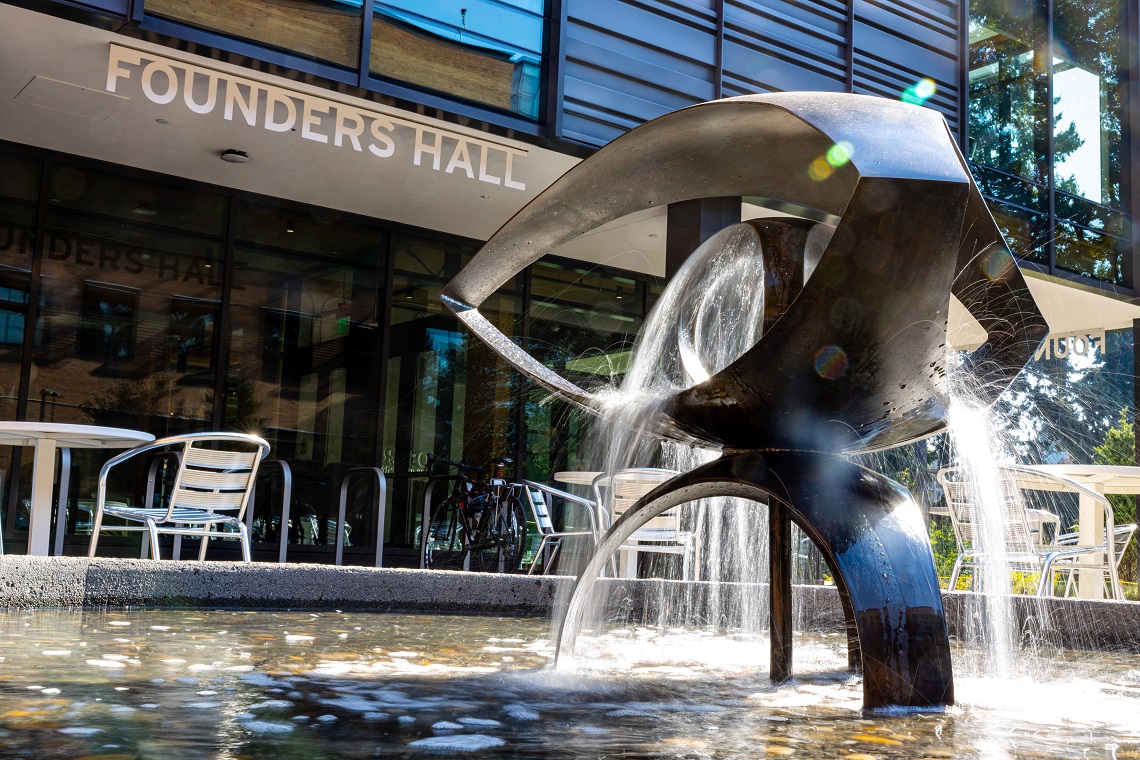
The sole element carried over from old Mackenzie Hall is a gem of Northwest dimensional art: the sublime “Fountain of Reflection,” by George Tsutakawa.
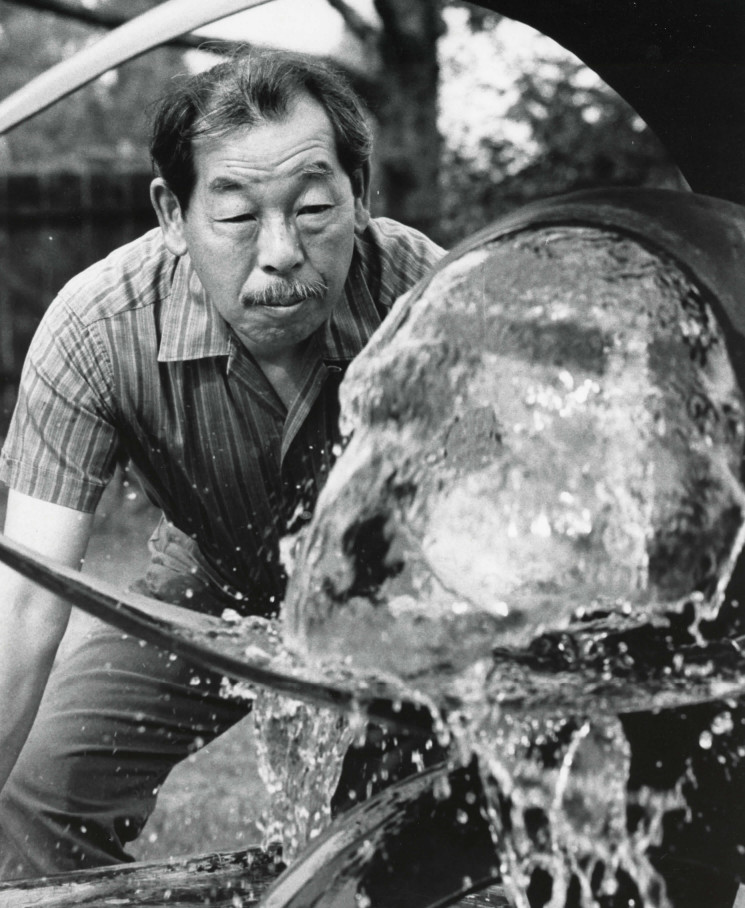
Tsutakawa was a “double dawg” UW graduate (BA 1937, MA 1950) and longtime professor (1946-1976), who rose to global renown for his painting and sculpture, eventually receiving his alma mater’s highest honor of Alumnus Summa Laude Dignatus in 1984. He died in 1997.
The Fountain of Reflection was an early work of Tsutakawa’s 70+ sublime, water-wielding sculptures that enhance public spaces around the world.
Originally commissioned for the 1962 World’s Fair—and conceived as a tribute to that most entertaining of entrepreneurs and Foster grad Ivar Haglund (BA 1938)—the curvilinear sculpture was relocated to the UW campus in 1967 and to the bamboo- and Japanese maple-lined courtyard of Mackenzie Hall in 1986.
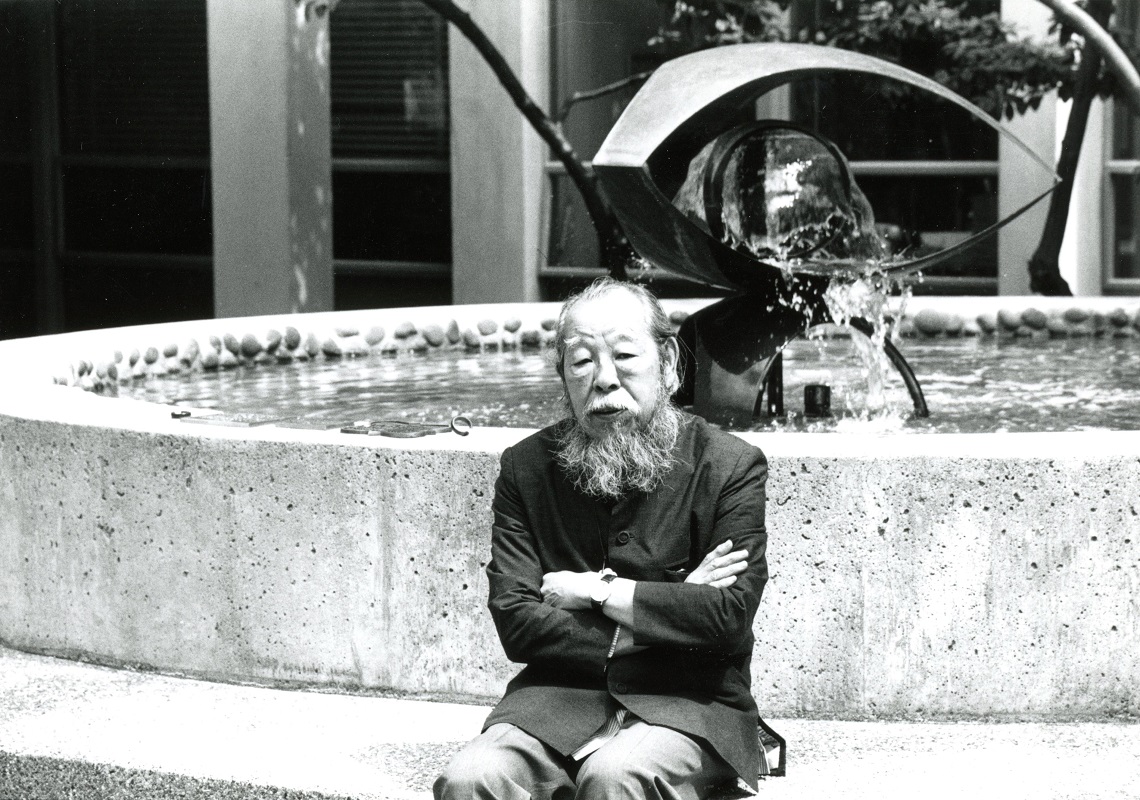
The fountain feature was forged of copper alloy in an elegant abstract style. As with many of his fountains, Tsutakawa evoked a favorite sculptural theme of Japanese obos—stones stacked in perfect balance. He has suggested that the ovoid openings also infer the eye of Raven in Northwest Coast Native iconography.
Tsutakawa’s son, the artist Gerard Tsutakawa, was instrumental in restoring and reinstalling the Fountain of Reflection in its new home at the heart of Founders Hall plaza, where its harmonious shapes and gentle cascade offer a calming respite for passersby along one of the busiest corridors on campus.
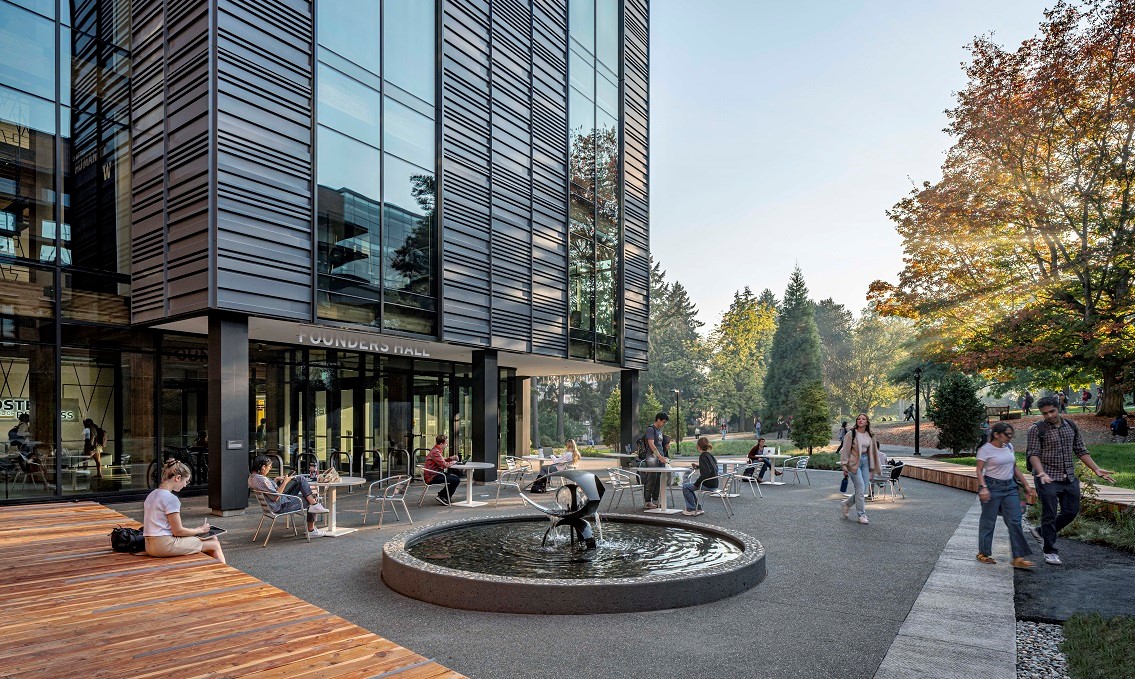
Funding for the art of Founders Hall came from a generous anonymous donor.
